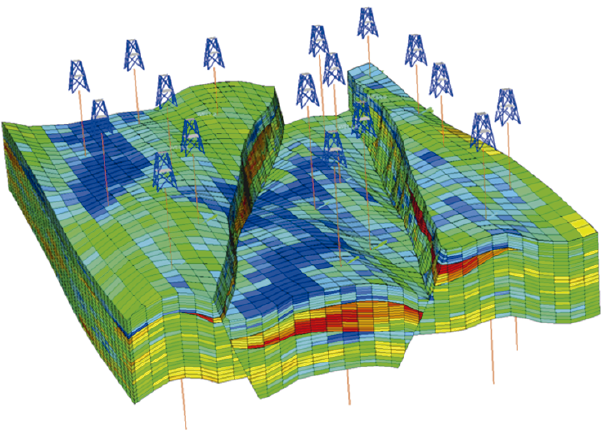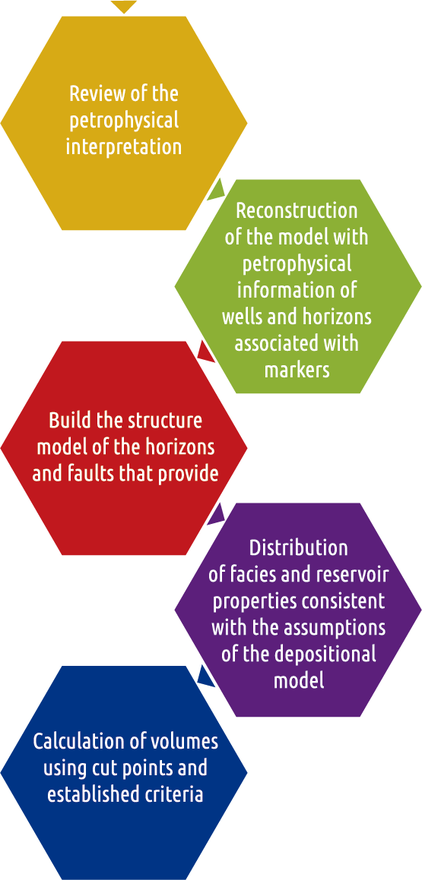Reservoirs Characterization
Reservoir Characterization is the model of a specific volume of the subsoil that incorporates all the geological characteristics of the deposit. These models are used to quantify characteristics within the volume of the subsoil that are relatively stable over long periods of time and can therefore be considered static.

These attributes include the modeling of the structural shape and the thicknesses of the formations within the subsoil volume, together with their lithologies and the porosity and permeability distributions. These last two characteristics often vary significantly from one location to another within the volume, which generates heterogeneity.

However, the porosity and permeability are stable in the almost geological timeframe and do not change due to the movement of fluids or gases through the porous spaces in the formations. The result is a reservoir characterization model (also known as a “static model” and sometimes called a “geological model”).
Figure 1. Workflow "Static Model"
The shale gas reservoir rocks require the analysis of high quality seismic data, cores and log measurements and engineering data to produce a precise reservoir characterization model.
This model is used as input data in reservoir simulation, during which reservoir engineers add other reservoir characteristics, such as pressures, temperatures, and fluid and gas compositions. These characteristics can change due to the movement of fluids or gases through the porous spaces of the formations.
Because they are dynamic by nature in short time frames, once production has started, these models are called “dynamic models.” Detailed reservoir simulations (dynamic models) that are based on accurately developed reservoir characterizations ( static models) can be of great value to optimize the location of the well and the planning of the development of the field.
Figure 2. Workflow "Dynamic Model"






